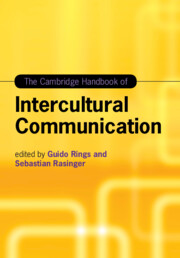Book contents
- The Cambridge Handbook of Intercultural Communication
- Cambridge Handbooks in Language and Linguistics
- The Cambridge Handbook of Intercultural Communication
- Copyright page
- Contents
- Figures
- Tables
- Contributors
- Acknowledgements
- Introduction
- Part I Introducing Intercultural Communication
- 1 What Is Culture?
- 2 What Is Intercultural Communication?
- 3 Rethinking Intercultural Competence
- 4 Interculturality or Transculturality?
- Part II Theoretical Approaches
- Part III Methods
- Part IV Application
- Part V Assessment
- Index
- References
1 - What Is Culture?
from Part I - Introducing Intercultural Communication
Published online by Cambridge University Press: 18 February 2020
- The Cambridge Handbook of Intercultural Communication
- Cambridge Handbooks in Language and Linguistics
- The Cambridge Handbook of Intercultural Communication
- Copyright page
- Contents
- Figures
- Tables
- Contributors
- Acknowledgements
- Introduction
- Part I Introducing Intercultural Communication
- 1 What Is Culture?
- 2 What Is Intercultural Communication?
- 3 Rethinking Intercultural Competence
- 4 Interculturality or Transculturality?
- Part II Theoretical Approaches
- Part III Methods
- Part IV Application
- Part V Assessment
- Index
- References
Summary
Werner Delanoy explores different definitions of culture both in their historical context and with regard to future developments in intercultural communication. As an advocate of a dialogic approach, the author argues in favour of non-essentialist and power-critical perspectives in line with a (post-)humanistic and cosmopolitan agenda.
- Type
- Chapter
- Information
- The Cambridge Handbook of Intercultural Communication , pp. 17 - 34Publisher: Cambridge University PressPrint publication year: 2020
References
- 2
- Cited by

